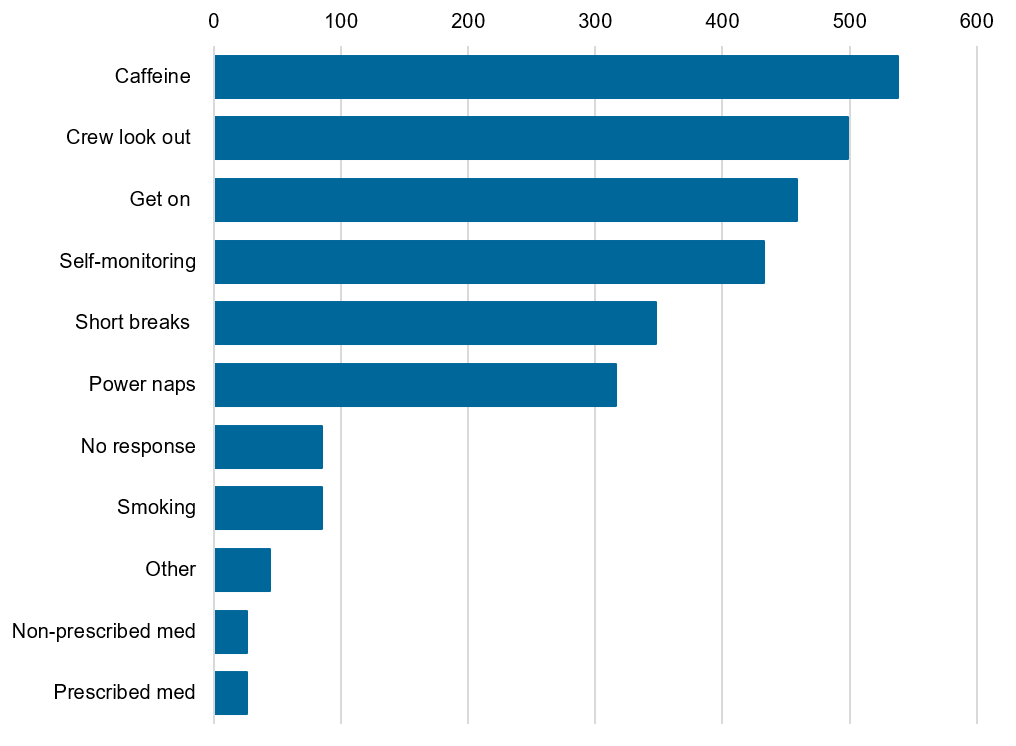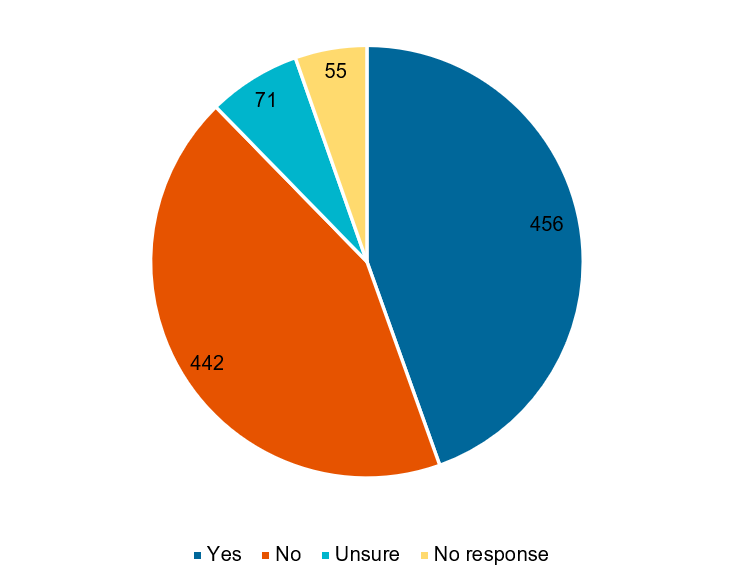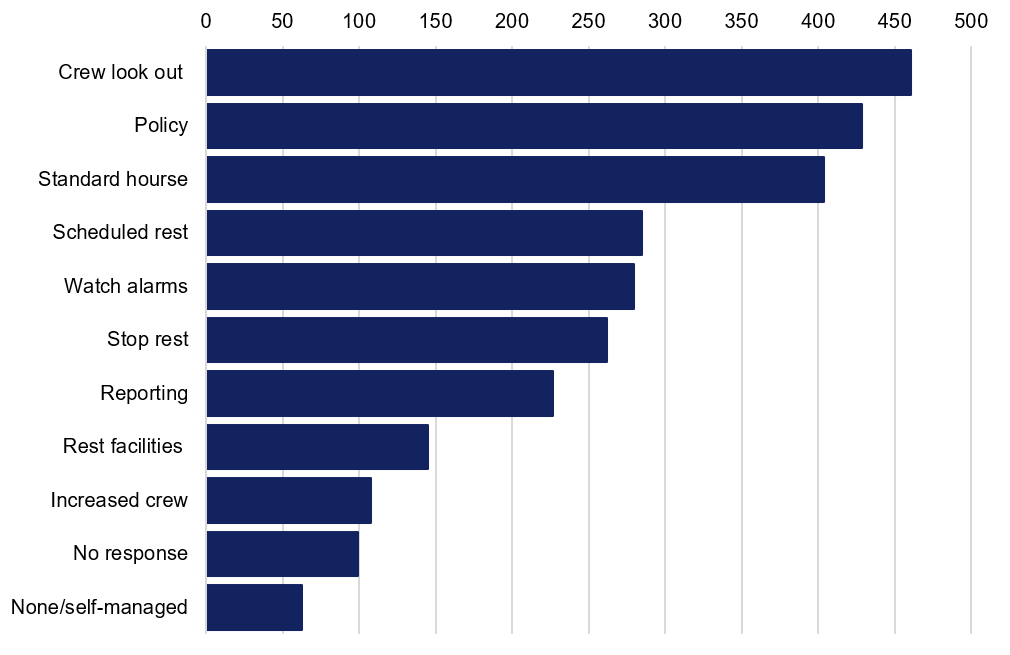Individual coping skills used to manage fatigue
Respondents were asked to state the fatigue coping skills that they generally used while out at sea. The highest percentages captured were caffeine (57%), and looking out for each other (53%); and the lowest percentages were smoking (9%), prescription drugs (3%) and non-prescription drugs (3%). Coping skills are not considered to be effective fatigue countermeasures (getting on with work (49%) and neither is self-monitoring (46%)) which were chosen by nearly half of all respondents. The reason for this is research has shown that individuals are poor judges of their performance when fatigued. Further education and awareness that presents effective and coping mechanisms, is needed (Table 7 and Figure 16).
| Fatigue coping skills | Frequency | Percentage |
|---|---|---|
| Get on with work regardless | 459 | 49% |
| Self-monitoring | 433 | 46% |
| Taking power naps | 316 | 34% |
| Caffeine (e.g. energy drinks, coffee) | 538 | 57% |
| Crew looking out for each other | 499 | 53% |
| Taking short breaks while on duty | 348 | 37% |
| Smoking | 85 | 9% |
| Prescribed medication | 26 | 3% |
| Non-prescribed medication | 26 | 3% |
| Other | 44 | 5% |
| No response | 85 | 9% |

Fatigue management training and information
Respondents were asked if they had received any fatigue management information, guidance, or training. 50% (513) of respondents indicated that they had either not received any fatigue management training or guidance or were unsure. These statistics indicate that more education and awareness material on fatigue management is needed (Table 8).
| Fatigue management information, guidance or training | Frequency | Percentage |
|---|---|---|
| Yes | 456 | 45% |
| No | 442 | 43% |
| Unsure | 71 | 7% |
| No response | 55 | 5% |
| Total | 1024 |

Fatigue management approaches
Respondents were asked to identify the fatigue management approaches that owners/operators of their vessels have in place. As per Table 9 and Figure 18 the highest percentages selected included good practise approaches to fatigue management as per the fatigue/sleep literature (i.e., Encourage the crew to look out for each other (50%), fatigue management policy and procedures (46%) and incorporating standard work hours and schedule (43%)).
Other management approaches such as allowing the crew to stop work when unable to stay awake (28%), scheduled rest breaks (30%), navigational watch alarms (30%), encouraging fatigue reporting (24%) and increasing crew numbers (12%) were not as widely selected. Further exploration into the drivers behind why these management approaches were not as widely used will allow for better guidance to be developed to support this area.
Table 9: Approaches to manage fatigue frequency count and percentages of total
Approaches to manage fatigue | Frequency | Percentage |
Standard working hours/work schedule | 404 | 43% |
Encourage crew to look out for each other | 461 | 50% |
Crew allowed to stop work – rest or sleep if unable to stay awake | 262 | 28% |
Use watchkeeping/navigational watch alarms | 280 | 30% |
Scheduled rest breaks | 285 | 30% |
Fatigue management policy/procedure | 429 | 46% |
Encourage reporting of fatigue | 227 | 24% |
Access to adequate rest facilities | 145 | 16% |
Increase crewing numbers | 108 | 12% |
None/self-managed | 63 | 7% |
No response | 99 | 10% |
